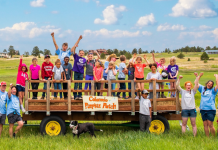 Domestic Violence is Prevalent
Domestic Violence is Prevalent
One in every 3 women and 1 in every 4 men in the United States have been victims of some form of physical violence by an intimate partner within their lifetime. That’s a sobering statistic, provided by the National Coalition Against Domestic Violence. Additionally, 1 in 15 children are exposed to intimate partner violence each year and 90 percent of these children are eye witnesses to this violence.
Even though the stereotype of a domestic violence victim is a young, poor, under-educated woman, this problem affects survivors of every race, age, educational, and economic background. Chances are extremely likely that you know someone who is affected.
Much More Than Physical Abuse
Intimate abuse also includes psychological or emotional, economical, and verbal abuse. One definition of emotional abuse is “any act including confinement, isolation, verbal assault, humiliation, intimidation, infantilization, or any other treatment which may diminish the sense of identity, dignity, and self-worth.”
This form of abuse is even more common. It is estimated that 48.4% of women and 48.8% of men have experienced at least one psychologically aggressive behavior by an intimate partner, according to the NCADV.
This often hidden abuse does not generally leave a bruise or scar. However, it is just as damaging or even more so. Psychological abuse occurs over a period of months or years. Often the abuser makes small innocent sounding comments such as, “Can’t you take a joke?” and then their behavior escalates over time. This behavior slowly erodes a person’s self-esteem and makes them question their perception of reality. Many do not even realize it is happening.
Here are warning signs of an emotionally abusive relationship.
Increasing Awareness
We have come a long way in recognizing that intimate abuse is a problem. Several generations ago, this form of abuse was considered a private matter. Local law enforcement and courts were hesitant to get involved.
The first National Domestic Violence Awareness Month was observed in October 1987. The intent was to connect battered women advocates across the nation who were working to end violence against women and their children. This is also the year the first national toll-free The National Domestic Abuse Hotline began.
This month features many nationwide events and activities designed to mourn those killed by domestic violence, to celebrate survivors, and to connect those who work to end violence. The symbol for this awareness month is a purple ribbon. The purple color signifies the physical and emotional bruises of those affected.
What You Can Do
If someone you know is experiencing domestic violence, there are ways that you can help.
Please remember that your friend or loved one may be embarrassed by this situation or be in denial that this is happening. However, if you see signs of physical or emotional abuse, don’t ignore them. Refer them to The National Domestic Abuse Hotline or to a local support organization. Encourage them to talk about what they are experiencing when they are ready to talk and don’t be afraid to talk about this with them. Be supportive without judging their situation and simply state that you are worried about their safety. Know that many who are abused are not ready or able to leave the situation for months or even years. Encourage them to make a Safety Plan, and refer them to The National Domestic Abuse Hotline or to a local support organization.
It is important to recognize that many people who are dealing with domestic violence have their phone and computer use monitored. Offer to let them use your phone or computer to call or to search for information.
If you are dealing with domestic violence, contact an organization to help you find a safe place and seek counseling to help you to cope.
Local Resources
TESSA
TESSA was founded in 1977 in response to an increasing number of calls regarding intimate abuse. Their mission statement is, “to help women and their children to achieve safety and well-being while challenging communities to end sexual and family violence.”
TESSA offers a 24-hour SAFE LINE at 719-633-3819
This organization also offers a Safe House which provides emergency shelter, food, case management, counseling, and support to female survivors and their children. Additionally, they provide victim advocacy, a children’s program including counseling and advocacy, and counseling and support groups for domestic violence survivors and sexual assault survivors. They also offer legal services to aid clients in receiving temporary or permanent restraining orders, as well as help securing permanent housing and job training.
This organization has several volunteer opportunities if you would like to help.
Violence Free Colorado
Violence Free Colorado was also established in 1977 as a nonprofit statewide membership program. Members include domestic violence service providers and community members.
The coalition works to end domestic violence through three main initiatives: strengthening Colorado’s domestic violence shelters by providing training and technical assistance; creating change in Colorado by developing and supporting public policy and legislative initiatives that protect victims and survivors of domestic violence; and engaging Colorado in the movement to end violence by promoting awareness of domestic violence to the media and general public.
COSMB Cares
This post regarding domestic violence is part of Colorado Springs Moms Blog’s ongoing series COSMB Cares. To read more pieces in the series or to find volunteer opportunities, click here.













